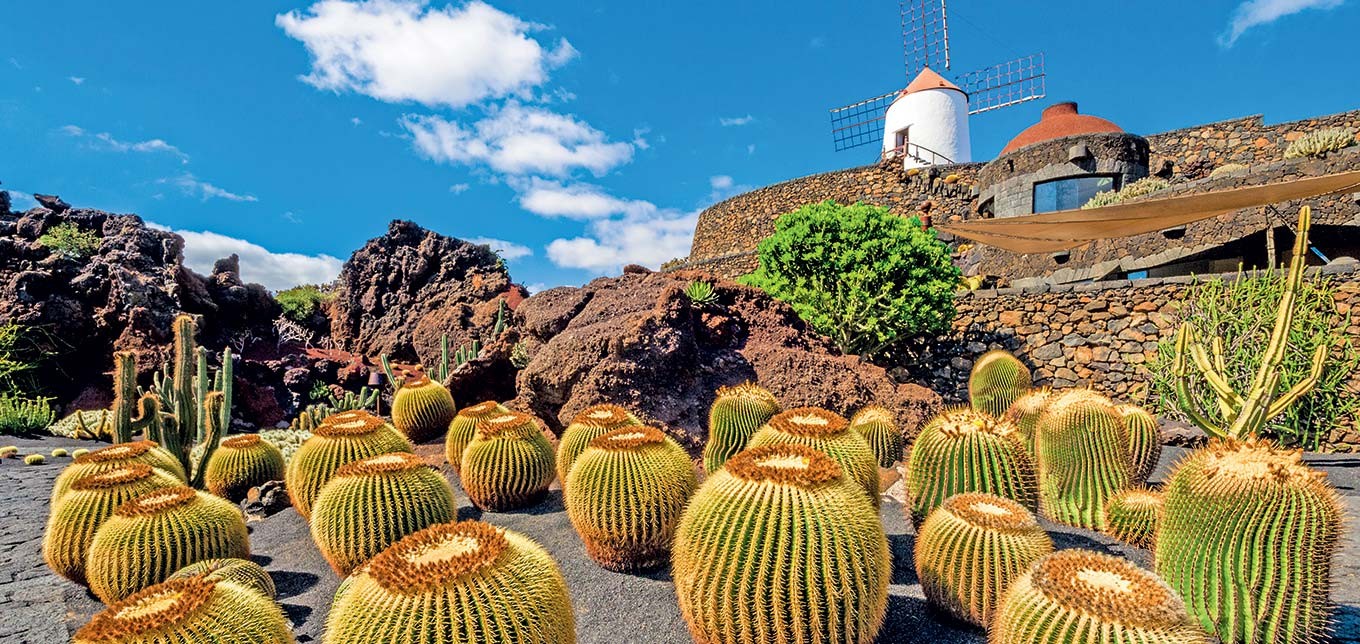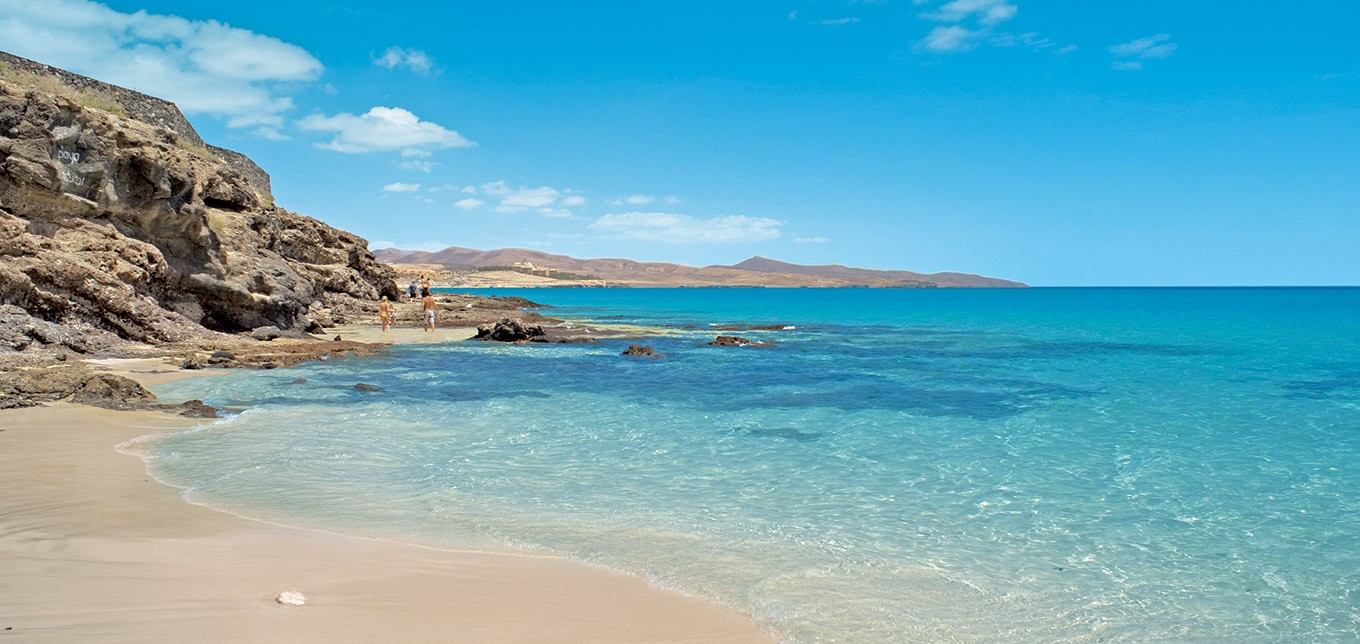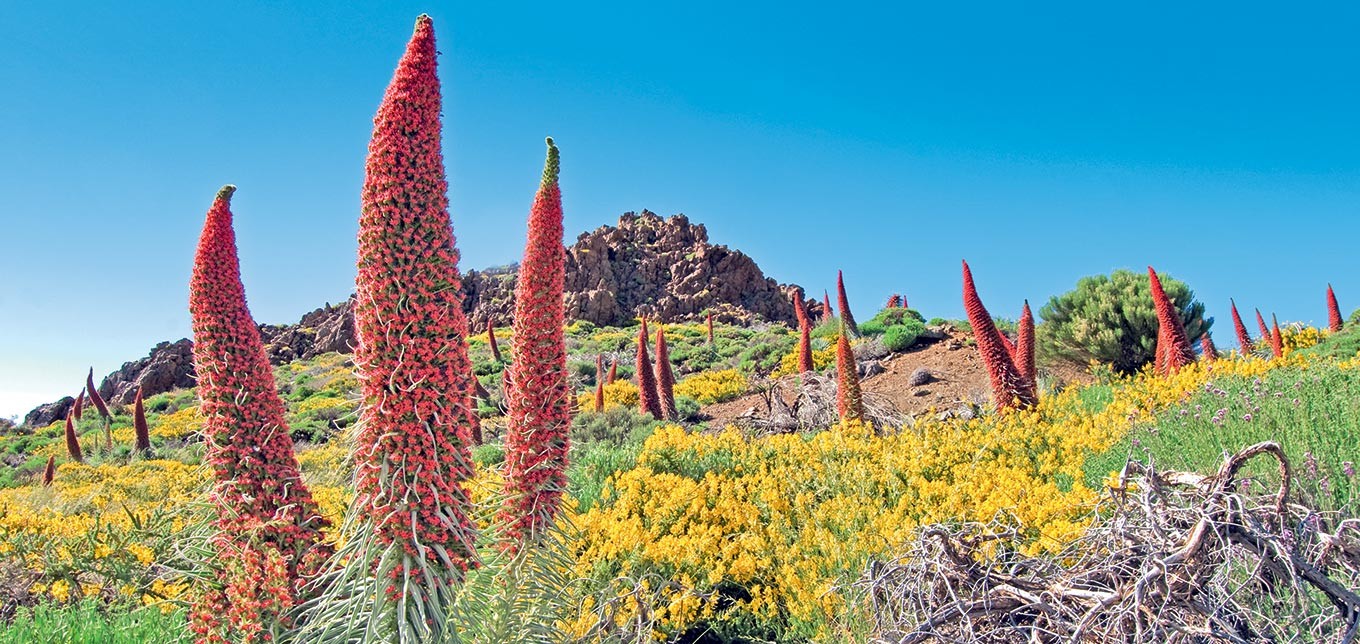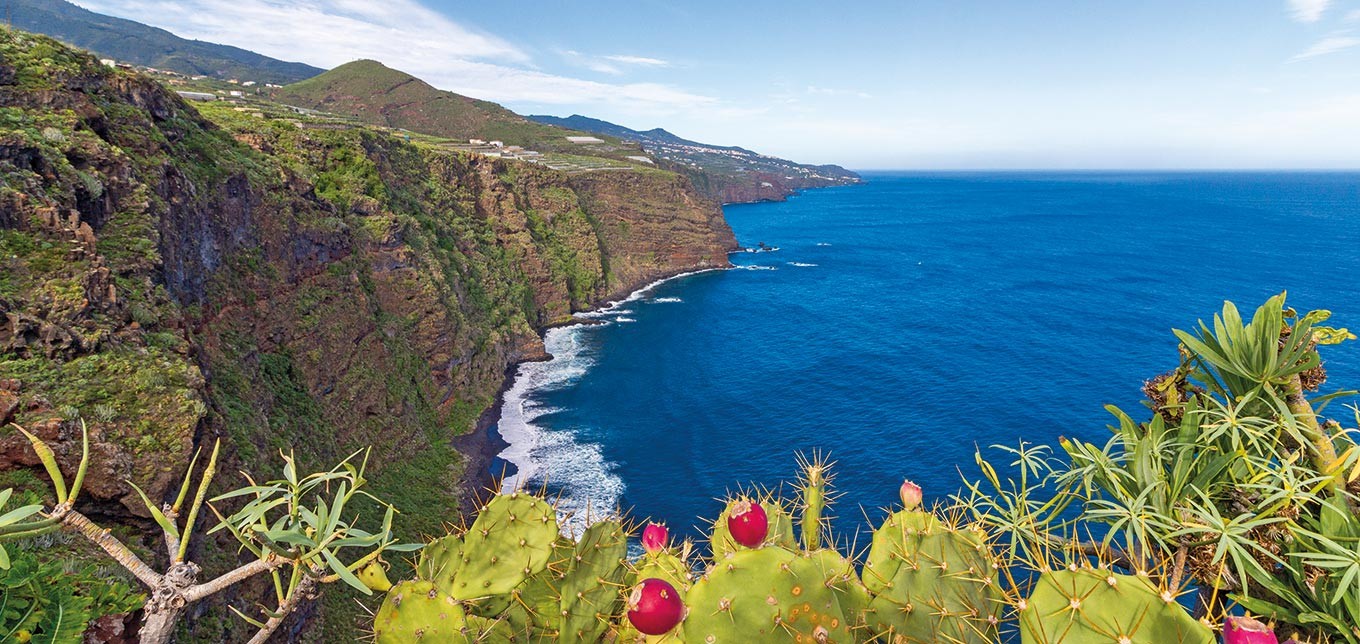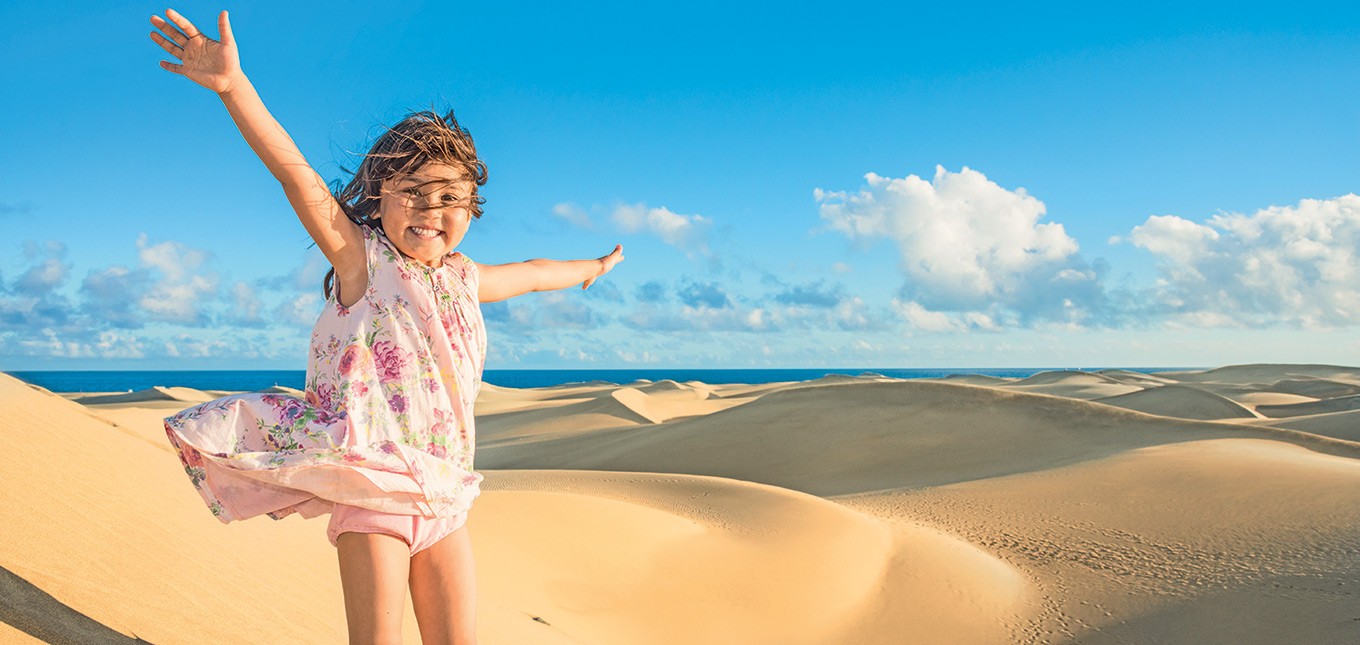The Canary Islands
The Canary Islands are located off the north-west coast of Africa and, with a pleasant flight time of around four and a half hours and warm summer temperatures in winter, are one of the most popular holiday destinations. The scenic diversity of the Canary Islands includes subtropical landscapes, desert-like stretches of land, high rocky massifs and golden beaches. The sunny, mild climate guarantees a successful beach holiday for young and old all year round! But which of the beautiful islands is right for you? Discover the differences here.
Fuerteventura - The ultimate beach paradise
With just 68 inhabitants per km², Fuerteventura is the most sparsely populated island in the Canaries. Thanks to its dry climate and exceptional number of hours of sunshine, the island is a paradise for beach holidaymakers and water sports enthusiasts. Almost all of the island's fine sandy beaches slope gently down to the sea, so even young children can enjoy a relaxed swim in the sea. The tourist centres of Playa de Jandía and Corralejo also offer a lively nightlife.
Gran Canaria - a versatile mini-continent for a succesful holiday
A unique dune world, popular seaside resorts like Playa del Inglés and Playa de Maspalomas with beautiful sandy beaches, entertainment and shopping centres with a vibrant nightlife, beautiful hiking trails, picturesque little towns, golf courses... Gran Canaria has many wonderful facets and is suitable for all types of holiday.
La Palma - The green island of the Canary Islands
La Palma, also known as "La Isla Bonita", is a true dream destination for all nature lovers. It is the most north-westerly of the Canary Islands with unique vegetation. Let yourself be enchanted and experience a world of colourful waterfalls, ancient forests and black sand beaches. Discover the breathtaking landscape around the erosion crater Caldera de Taburiente, one of the largest craters in the world, or enjoy a dip in the protected natural swimming pool Charco Azul in the north-east of La Palma. Not forgetting the Palmerian cuisine with fish and seafood rounded off with the special flavour of the island's wines.
Tenerife - full of contrasts
Tenerife impresses with its incredible variety of landscapes and its tropical climate. While the black sandy beaches, which are bathed in sunshine all year round, leave plenty of space for swimming activities, the island's interior offers unspoilt landscapes with subtropical valleys, lush forests and unusual volcanic backdrops dominated by the famous Pico del Teide. Active holidaymakers and outdoor enthusiasts will feel right at home here.
Lanzarote - the rough volcanic island
Due to its unrivalled volcanic landscape, Lanzarote was declared a biosphere reserve by UNESCO in 1993. The black pearl of the Canary Islands boasts barren but fascinating landscapes and natural spectacles created by volcanic activity. The numerous hours of sunshine, the beautiful beaches and the crystal-clear water are also ideal for swimming, surfing and diving.


